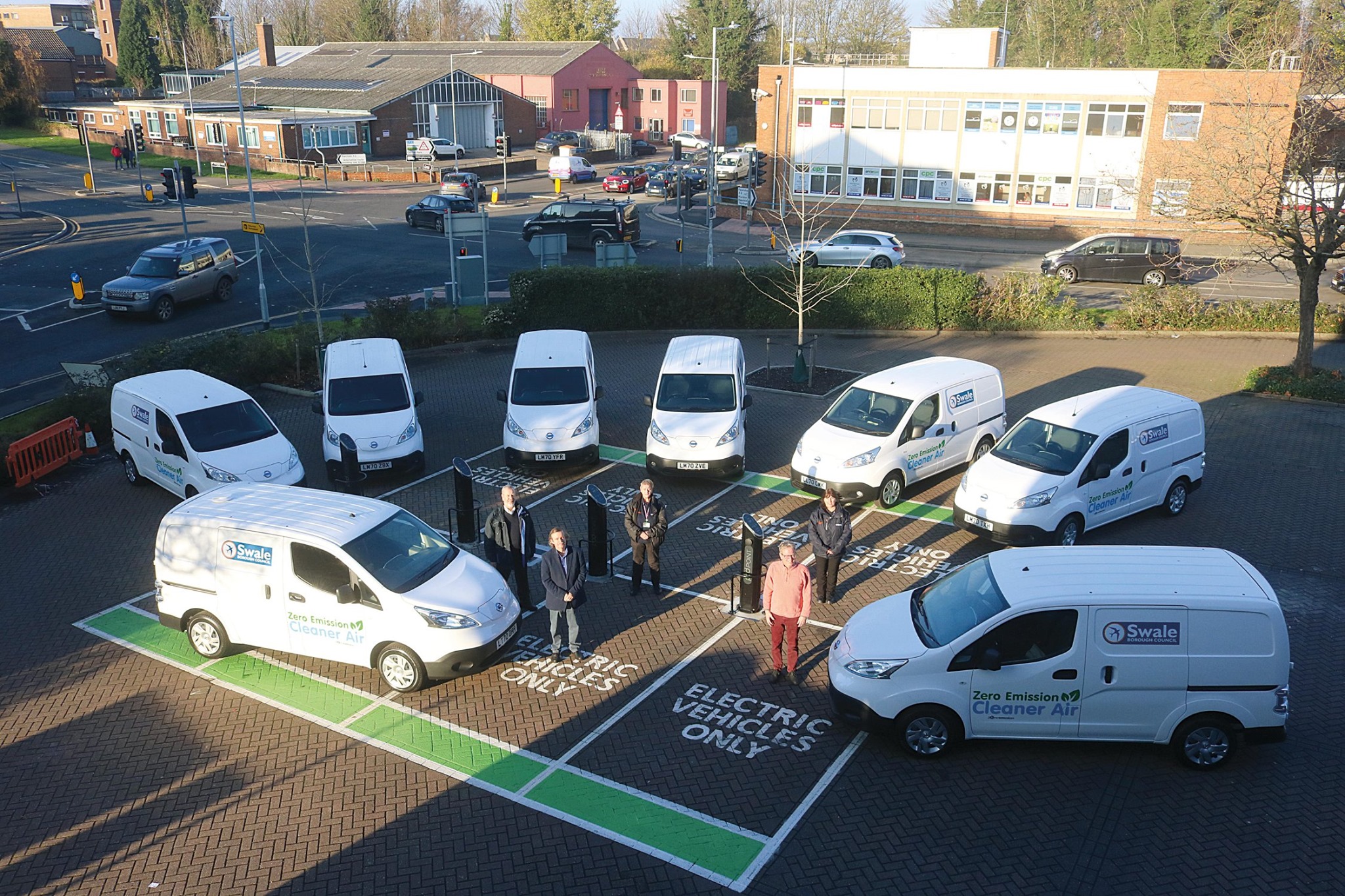Swale Borough Council will now save more than 30 tonnes of carbon every year with a fleet of nine new electric vehicles.
The challenge
Upon the declaration of a Climate and Ecological Emergency in 2019, Swale Borough Council is committed to achieving net-zero across our council estate by 2025. Our estate was assessed by the Carbon Trust, with analysis indicating that our fleet accounts for 40 tCO2 (for 2018/19). The Carbon Trust identified the replacement of the fleet with electric vehicles as a viable solution, including high carbon savings per year. Swale also has a significant number of Air Quality Management Zones (AQMAs), requiring action to be taken to drastically improve air quality in the borough.
The solution
The council’s fleet of diesel vans was replaced with nine Nissan Env200 vans that will be charged at the Swale House council offices in Sittingbourne via eight new EV chargers in January 2021.
Three environmental warden vans, three green space vans, two dog warden vans and a parking services van are now out on the road alongside the Mayor’s car which was upgraded to an electric vehicle in December.
The new electric vans join the two Nissan Leaf electric cars already used by the council’s civil enforcement team.
See the below table for our costs and savings, taken from the Carbon trust Report.
| Item | Cost (£) | Energy saving (kWh/yr) | Cost saving (£/yr) | Carbon saving (tCO2e/yr) | Payback (yrs) |
| Electric Vehicle leasing | 31,200 | ||||
| Charging station | 1,500 | ||||
| Total | 32,700 | 94,986 | 10,087 | 26.3 | 12.1 |
The impact
So far, the charging of the vehicles has recorded that 3,489kg of carbon has been saved already. Drivers have adapted well to the new vehicles, exceeding expectations in many cases. After around 6 months in-situ we are unable to provide the financial benefits to date.
Lessons learned
As we were one of the first in the country to make the change to electric, it was hard to learn from other LA experiences. Being clear on available power supplies from the start is a key consideration, along with lead in times from contractors to do the work. We needed to have a new power supply installed which ultimately required the closure of a main town centre road whilst a power cable was laid. This delayed implementation slightly.
I would also suggest that it is key to have the drivers of the vehicles engaged and involved in the process from the very start. Some companies offer EV driver training which may be a good idea to roll out in the early stages. The risk assessment is also an interesting piece of work as the risks from EV’s can be quite different to diesel or petrol vehicles.
Some of the drivers were sceptical at the planning stage of the project e.g. range anxiety and towing were key factors. I think it is fair to say that some like the electric vehicles more than others. However, I did have one of the initially sceptic officers contact me to tell me how much they like their electric van and as a result they will be getting their own personal electric car as soon as they can.
Contact
Grace Couch: [email protected]

